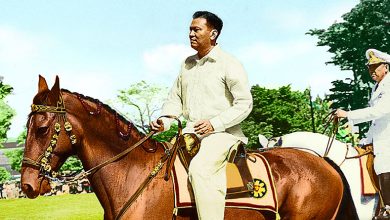The American Legacy
The American presence, indirect though it might be, was still very evident after independence, extending to every aspect of the country’s life. It was felt in the political and institutional field, since the constitution was based on the United States model. The economy was dominated by trade with America and by American investment. A profound cultural transformation was brought about by the provision of free primary education, extending to the remotest villages, the development began by the dispatch of 600 American teachers to the Philippines in 1901; and traditional ethics were affected by the adoption of Western attitudes and Western materialism. Finally the Americans greatly improved public health and hygiene and developed many social services.
At the end of the war the country’s economy was completely disorganized and the currency had depreciated to an intolerable extent. Accordingly in July 1949, under the Bell Act, the United States offered new arrangements for trade: for a period of eight years Philippine goods were to be allowed to enter the United States duty-free, after which duties were to be increased at the rate of 5% a year until they reached 100%. In exchange, however, the Americans will have full power to utilize, develop and use all agricultural land and timber, to run the public services and to develop the water, coal, oil and mineral resources of the Philippines. This ran counter to the provision in the constitution that 60% of the capital of such enterprises should be held by Filipinos, and it was therefore necessary to put through an amendment to the constitution. This was approved by plebiscite in 1967, in spite of the opposition of Claro M. Recto and Jose P. Laurel, who maintained that the nation’s patrimony should be conserved and developed by the Filipinos themselves. The Philippines, thus gave more than they received, even allowing for the 600 million dollars from the United States for war damage and another 100 million for reconstruction.
In 1946 the Rehabilitation Finance Corporation (which later became the Development Bank of the Philippines) was established to provide credit facilities for construction work; and the Central Bank sought to establish the country’s economic sovereignty and to stabilise the peso.
In 1954 the inequitable provisions of the Bell Trade Act were amended by the Laurel-Langley agreement, which accelerated the rate of increase of import duties on American goods entering the Philippines and slowed down the increase of American duties on goods from the Philippines. Both types of duty (with the exception of the duty on sugar) were to reach 100% by 1974, by which time Filipinos were also to hold at least 60% of company capital.
The military of the Philippines were still heavily dependent on the United States. In 1947 the two countries signed a pact providing for assistance in terms of equipment and personnel; and in addition the Americans retained their military bases in the Philippines on a 99-year lease (reduced in 1959 to 25 years, with provision for renewal). In 1976 the Filipinos resumed their theoretical sovereignty over these bases (particularly Clark Field and Subic) and required the United States to pay rent for them.




